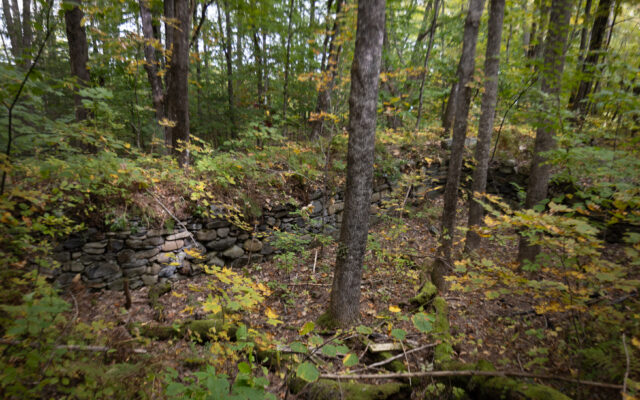
$4.3M federal grant to help Maine’s oldest forests store more carbon
Marking a transformative investment in northern New England’s forests, the U.S. Forest Service has awarded $4.3 million to the New England Forestry Foundation and its partners to help Maine forest landowners protect Maine’s oldest forests and implement practices on nearby lands that will help store carbon, and protect ecosystem health and biodiversity. NEFF will partner with landowners to defer timber harvesting in forests that are at least 150 years old, known as late successional old growth stands.
“This is a singular opportunity to protect highly valuable, ecologically rare, and carbon-dense late successional old growth forests,” said Ryan Owens, executive director of the New England Forestry Foundation. “It also will allow us to fund landowners and foresters to practice forestry that mitigates climate change, improves forest productivity, and improves wildlife habitat, so this is a win-win-win.”
By delaying harvesting of older forests now, the program will enable these forests to continue acting as a critical carbon storehouse while public- and private-sector partners explore ways to provide long-term protection, either through conservation funding or carbon markets. To ensure that the long-term protection of these LSOG forests does not result in disruption of the New England wood supply or “leakage” of carbon emissions by simply shifting harvesting to other forest regions, NEFF will provide payments to landowners to undertake climate-smart forestry practices on other parts of their land base to accelerate development of long-lived, sustainable wood products.
This project builds off the of the recent mapping of LSOG forests across northern Maine by Our Climate Common. This work was led by Dr. John Hagan, who has been studying and advocating for LSOG forests in Maine for two decades.
“The timing of this award from the U.S. Forest Service is perfect. With our new mapping using state-of-the-art remote sensing technology, we know precisely where LSOG forest is and how fast we’re losing it,” said John Hagan, president of Our Climate Common. “The grant gives us a way to conserve this ecologically exceptional forest, to compensate landowners, and to make a real difference for the climate.”
LSOG stands are the powerhouses of forest carbon and biodiversity, storing far more carbon than other stand types and providing innumerable specific ecological benefits. An acre of LSOG forest stores approximately 5 times more carbon than the average wooded acre in the 4.3 million acres of commercial forests in the unorganized townships of Maine. But right now, these older forests, which provide unique ecological and wildlife habitat value, make up less than 4 percent of the area.
Our Climate Common reports that LSOG forests are being harvested at a much faster rate than the rest of the forested landscape and, without protection, their research predicts most of such stands remaining on private lands to be harvested in the next two decades. This project aims to target stands in imminent danger of harvest.
The LSOG program will dovetail NEFF’s existing Climate-Smart Commodities project, also in partnership with the USDA. This project is piloting climate-smart forest management on New England’s forests as a way to help mitigate climate change while improving ecological function and to keep more than 646 million metric tons of CO2 out of the atmosphere over the next 30 years. This 30 Percent Solution, as researched by NEFF, shows that climate-smart forestry has the potential to store additional carbon representing nearly one-third of the total energy-related CO2 emissions reductions needed across New England by 2050.
New England’s forests contribute more than $13 billion annually to local and regional economies, sustaining over 50,000 jobs in the woods, mills, and supporting services.
Through the application of its core expertise in conserving forestlands and advancing Exemplary Forestry, the New England Forestry Foundation helps the people of New England to sustain their way of life, protect forest wildlife habitat and ecosystem services, and mitigate and adapt to climate change. In partnership with land owners, New England Forestry Foundation has conserved more than 1.2 million acres of forest since its founding in 1944, including one out of every three acres of forestland protected in New England since 1999. It also owns and manages more than 150 Community Forests across the region. For more information, visit www.newenglandforestry.org.